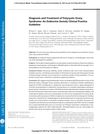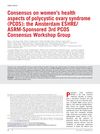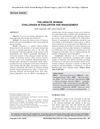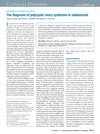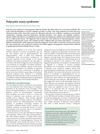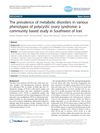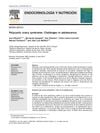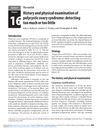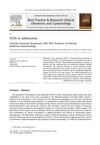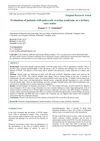American Association of Clinical Endocrinologists, American College of Endocrinology, and Androgen Excess and PCOS Society Disease State Clinical Review: Guide to the Best Practices in the Evaluation and Treatment of Polycystic Ovary Syndrome - Part 1
October 2015
in “
Endocrine Practice
”
Polycystic Ovary Syndrome PCOS chronic anovulation hyperandrogenism polycystic ovaries free testosterone ultrasound ovarian morphology serum 17-hydroxyprogesterone anti-Müllerian hormone reproductive function hirsutism alopecia acne oral contraceptives anti-androgens metformin 5-alpha-reductase inhibitors finasteride dutasteride bone mass metabolic abnormalities glycemic abnormalities cardiovascular health testosterone AMH birth control pills Propecia Avodart

TLDR The guide recommends specific methods for diagnosing PCOS and various treatments for its symptoms, while considering the health impacts on adolescents.
The 2015 document reviews best practices for diagnosing and treating Polycystic Ovary Syndrome (PCOS), emphasizing the need for accurate clinical assessment and the use of specific criteria for diagnosis, including chronic anovulation, hyperandrogenism, and polycystic ovaries. It highlights the importance of measuring free testosterone levels, using ultrasound for ovarian morphology, and considering serum 17-hydroxyprogesterone and anti-Müllerian hormone levels. The review discusses management strategies for reproductive function, hirsutism, alopecia, and acne, and the use of oral contraceptives, anti-androgens, and metformin for treatment. It also addresses the challenges of diagnosing PCOS in adolescents and the careful approach required, including the potential impact of anti-androgen therapy on bone mass. The document suggests that 5-alpha-reductase inhibitors like finasteride and dutasteride can be effective for hirsutism and alopecia when other treatments fail, with dutasteride being somewhat more successful for alopecia. Metformin is recommended for hirsutism in women with PCOS who have metabolic and glycemic abnormalities, although it is less effective than anti-androgens for hirsutism or acne. The review also notes the importance of considering the effects of anti-androgen therapies on bone and cardiovascular health, especially in adolescents.
